Juan Li
Department of Engineering, King's College London, London, UK
RTQA : Recursive Thinking for Complex Temporal Knowledge Graph Question Answering with Large Language Models
Sep 04, 2025Abstract:Current temporal knowledge graph question answering (TKGQA) methods primarily focus on implicit temporal constraints, lacking the capability of handling more complex temporal queries, and struggle with limited reasoning abilities and error propagation in decomposition frameworks. We propose RTQA, a novel framework to address these challenges by enhancing reasoning over TKGs without requiring training. Following recursive thinking, RTQA recursively decomposes questions into sub-problems, solves them bottom-up using LLMs and TKG knowledge, and employs multi-path answer aggregation to improve fault tolerance. RTQA consists of three core components: the Temporal Question Decomposer, the Recursive Solver, and the Answer Aggregator. Experiments on MultiTQ and TimelineKGQA benchmarks demonstrate significant Hits@1 improvements in "Multiple" and "Complex" categories, outperforming state-of-the-art methods. Our code and data are available at https://github.com/zjukg/RTQA.
SynthDoc: Bilingual Documents Synthesis for Visual Document Understanding
Aug 27, 2024



Abstract:This paper introduces SynthDoc, a novel synthetic document generation pipeline designed to enhance Visual Document Understanding (VDU) by generating high-quality, diverse datasets that include text, images, tables, and charts. Addressing the challenges of data acquisition and the limitations of existing datasets, SynthDoc leverages publicly available corpora and advanced rendering tools to create a comprehensive and versatile dataset. Our experiments, conducted using the Donut model, demonstrate that models trained with SynthDoc's data achieve superior performance in pre-training read tasks and maintain robustness in downstream tasks, despite language inconsistencies. The release of a benchmark dataset comprising 5,000 image-text pairs not only showcases the pipeline's capabilities but also provides a valuable resource for the VDU community to advance research and development in document image recognition. This work significantly contributes to the field by offering a scalable solution to data scarcity and by validating the efficacy of end-to-end models in parsing complex, real-world documents.
CMed-GPT: Prompt Tuning for Entity-Aware Chinese Medical Dialogue Generation
Nov 24, 2023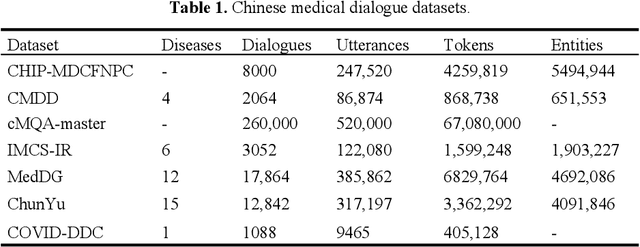

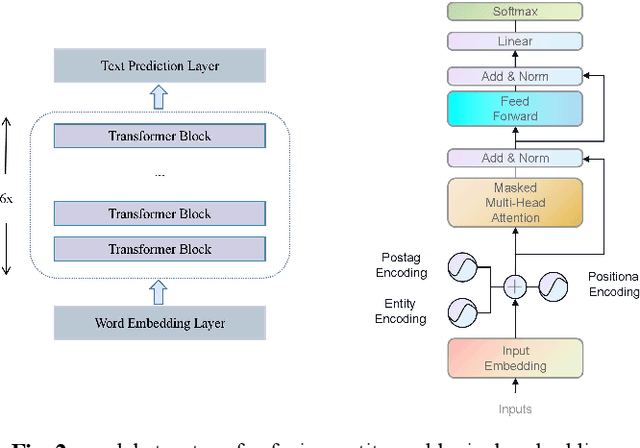

Abstract:Medical dialogue generation relies on natural language generation techniques to enable online medical consultations. Recently, the widespread adoption of large-scale models in the field of natural language processing has facilitated rapid advancements in this technology. Existing medical dialogue models are mostly based on BERT and pre-trained on English corpora, but there is a lack of high-performing models on the task of Chinese medical dialogue generation. To solve the above problem, this paper proposes CMed-GPT, which is the GPT pre-training language model based on Chinese medical domain text. The model is available in two versions, namely, base and large, with corresponding perplexity values of 8.64 and 8.01. Additionally, we incorporate lexical and entity embeddings into the dialogue text in a uniform manner to meet the requirements of downstream dialogue generation tasks. By applying both fine-tuning and p-tuning to CMed-GPT, we lowered the PPL from 8.44 to 7.35. This study not only confirms the exceptional performance of the CMed-GPT model in generating Chinese biomedical text but also highlights the advantages of p-tuning over traditional fine-tuning with prefix prompts. Furthermore, we validate the significance of incorporating external information in medical dialogue generation, which enhances the quality of dialogue generation.
Using wearable device-based machine learning models to autonomously identify older adults with poor cognition
Aug 28, 2023



Abstract:Conducting cognitive tests is time-consuming for patients and clinicians. Wearable device-based prediction models allow for continuous health monitoring under normal living conditions and could offer an alternative to identifying older adults with cognitive impairments for early interventions. In this study, we first derived novel wearable-based features related to circadian rhythms, ambient light exposure, physical activity levels, sleep, and signal processing. Then, we quantified the ability of wearable-based machine-learning models to predict poor cognition based on outcomes from the Digit Symbol Substitution Test (DSST), the Consortium to Establish a Registry for Alzheimers Disease Word-Learning subtest (CERAD-WL), and the Animal Fluency Test (AFT). We found that the wearable-based models had significantly higher AUCs when predicting all three cognitive outcomes compared to benchmark models containing age, sex, education, marital status, household income, diabetic status, depression symptoms, and functional independence scores. In addition to uncovering previously unidentified wearable-based features that are predictive of poor cognition such as the standard deviation of the midpoints of each persons most active 10-hour periods and least active 5-hour periods, our paper provides proof-of-concept that wearable-based machine learning models can be used to autonomously screen older adults for possible cognitive impairments. Such models offer cost-effective alternatives to conducting initial screenings manually in clinical settings.
Grant-Free NOMA-OTFS Paradigm: Enabling Efficient Ubiquitous Access for LEO Satellite Internet-of-Things
Sep 25, 2022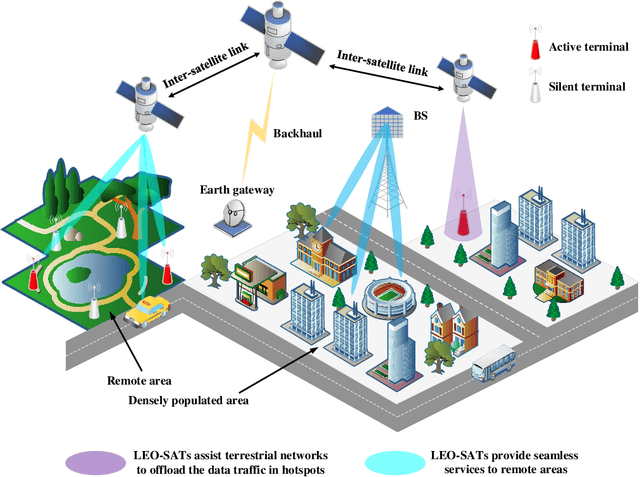
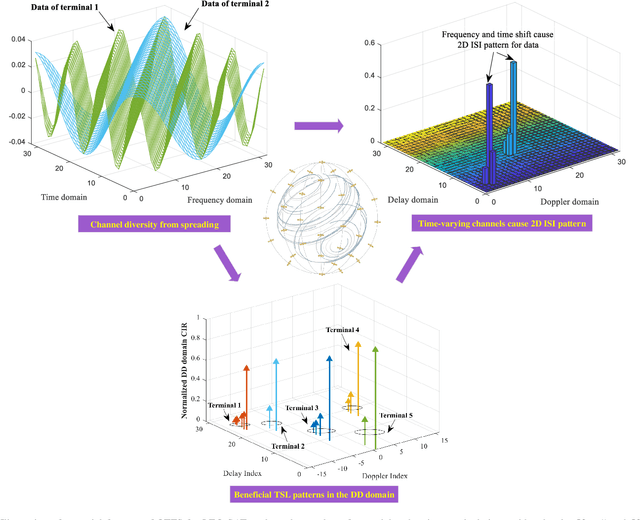
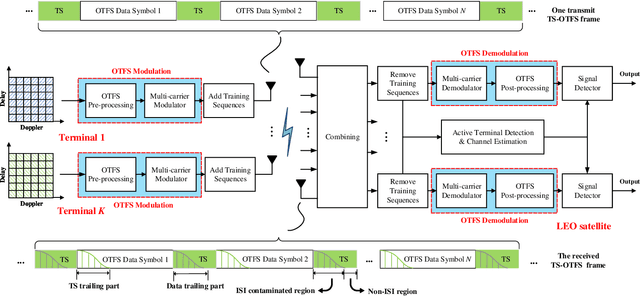

Abstract:With the blooming of Internet-of-Things (IoT), we are witnessing an explosion in the number of IoT terminals, triggering an unprecedented demand for ubiquitous wireless access globally. In this context, the emerging low-Earth-orbit satellites (LEO-SATs) have been regarded as a promising enabler to complement terrestrial wireless networks in providing ubiquitous connectivity and bridging the ever-growing digital divide in the expected next-generation wireless communications. Nevertheless, the stringent requirements posed by LEO-SATs have imposed significant challenges to the current multiple access schemes and led to an emerging paradigm shift in system design. In this article, we first provide a comprehensive overview of the state-of-the-art multiple access schemes and investigate their limitations in the context of LEO-SATs. To this end, we propose the amalgamation of the grant-free non-orthogonal multiple access (GF-NOMA) paradigm and the orthogonal time frequency space (OTFS) waveform, for simplifying the connection procedure with reduced access latency and enhanced Doppler-robustness. Critical open challenging issues and future directions are finally presented for further technical development.
Flow Completion Network: Inferring the Fluid Dynamics from Incomplete Flow Information using Graph Neural Networks
May 10, 2022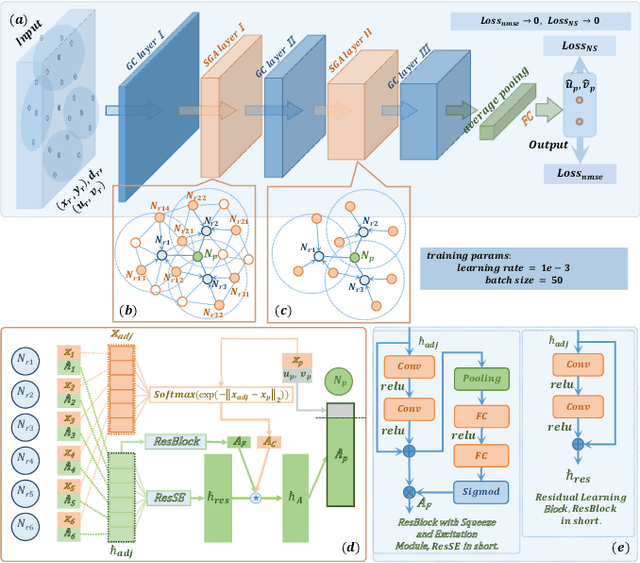
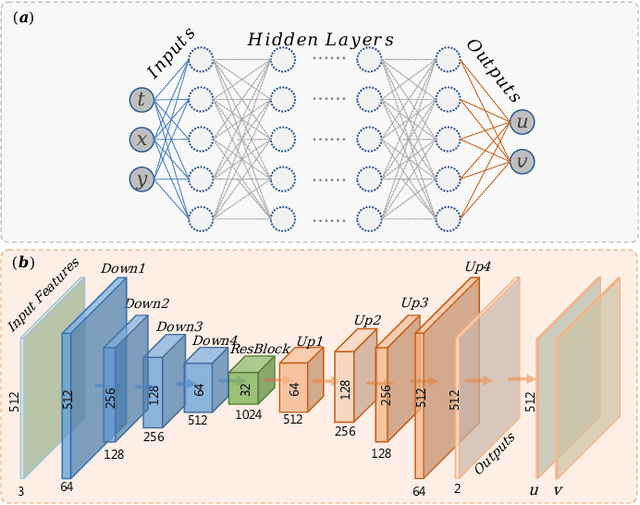
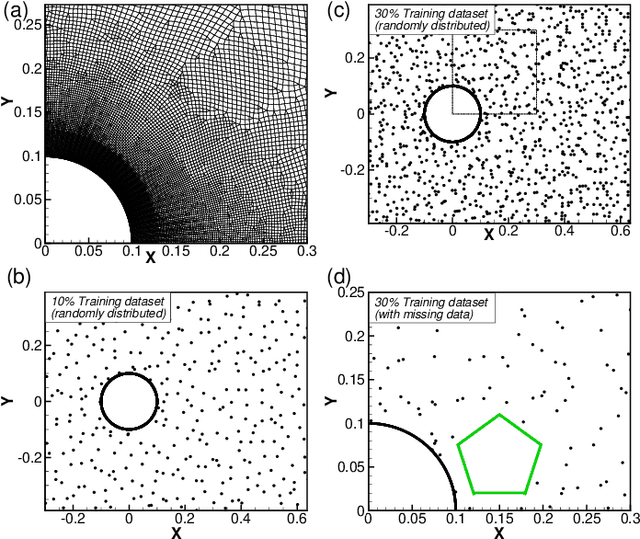

Abstract:This paper introduces a novel neural network -- the flow completion network (FCN) -- to infer the fluid dynamics, including the flow field and the force acting on the body, from the incomplete data based on Graph Convolution Attention Network. The FCN is composed of several graph convolution layers and spatial attention layers. It is designed to infer the velocity field and the vortex force contribution of the flow field when combined with the vortex force map (VFM) method. Compared with other neural networks adopted in fluid dynamics, the FCN is capable of dealing with both structured data and unstructured data. The performance of the proposed FCN is assessed by the computational fluid dynamics (CFD) data on the flow field around a circular cylinder. The force coefficients predicted by our model are validated against those obtained directly from CFD. Moreover, it is shown that our model effectively utilizes the existing flow field information and the gradient information simultaneously, giving a better performance than the traditional CNN-based and DNN-based models.
Knowledge Graph Reasoning with Logics and Embeddings: Survey and Perspective
Feb 15, 2022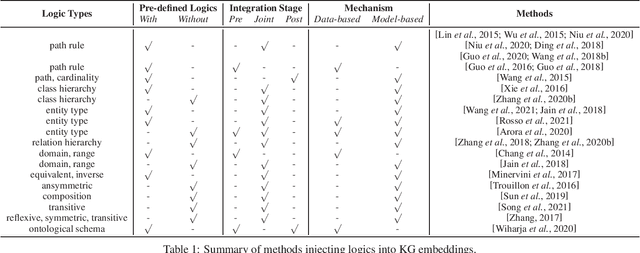

Abstract:Knowledge graph (KG) reasoning is becoming increasingly popular in both academia and industry. Conventional KG reasoning based on symbolic logic is deterministic, with reasoning results being explainable, while modern embedding-based reasoning can deal with uncertainty and predict plausible knowledge, often with high efficiency via vector computation. A promising direction is to integrate both logic-based and embedding-based methods, with the vision to have advantages of both. It has attracted wide research attention with more and more works published in recent years. In this paper, we comprehensively survey these works, focusing on how logics and embeddings are integrated. We first briefly introduce preliminaries, then systematically categorize and discuss works of logic and embedding-aware KG reasoning from different perspectives, and finally conclude and discuss the challenges and further directions.
Incentive Mechanisms for Federated Learning: From Economic and Game Theoretic Perspective
Nov 20, 2021
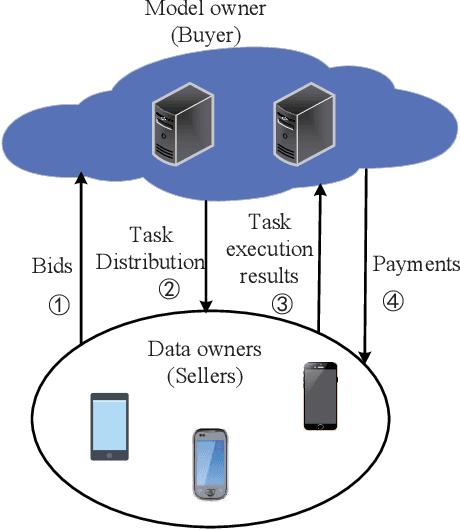

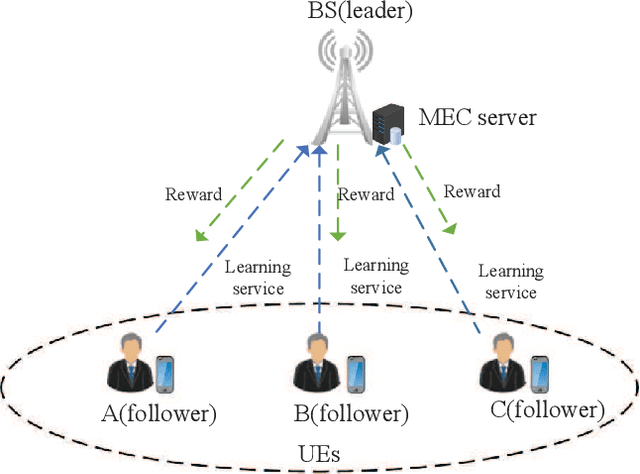
Abstract:Federated learning (FL) becomes popular and has shown great potentials in training large-scale machine learning (ML) models without exposing the owners' raw data. In FL, the data owners can train ML models based on their local data and only send the model updates rather than raw data to the model owner for aggregation. To improve learning performance in terms of model accuracy and training completion time, it is essential to recruit sufficient participants. Meanwhile, the data owners are rational and may be unwilling to participate in the collaborative learning process due to the resource consumption. To address the issues, there have been various works recently proposed to motivate the data owners to contribute their resources. In this paper, we provide a comprehensive review for the economic and game theoretic approaches proposed in the literature to design various schemes for stimulating data owners to participate in FL training process. In particular, we first present the fundamentals and background of FL, economic theories commonly used in incentive mechanism design. Then, we review applications of game theory and economic approaches applied for incentive mechanisms design of FL. Finally, we highlight some open issues and future research directions concerning incentive mechanism design of FL.
A Hybrid Decomposition-based Multi-objective Evolutionary Algorithm for the Multi-Point Dynamic Aggregation Problem
May 11, 2021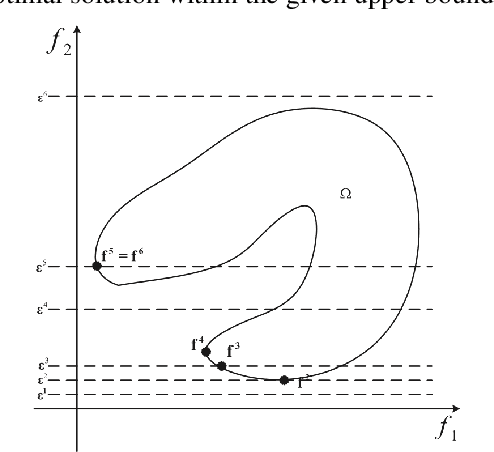
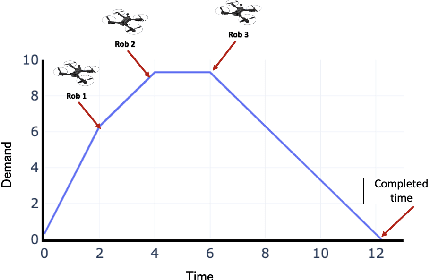
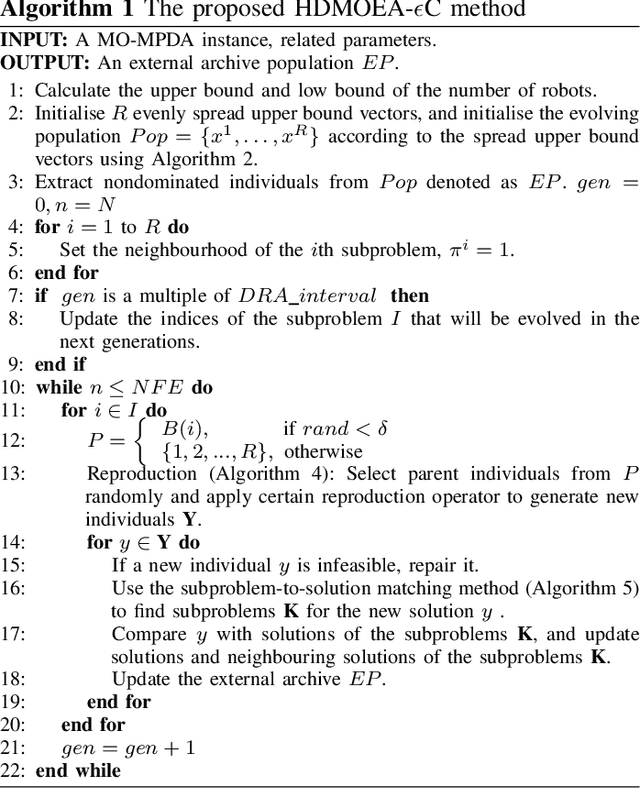
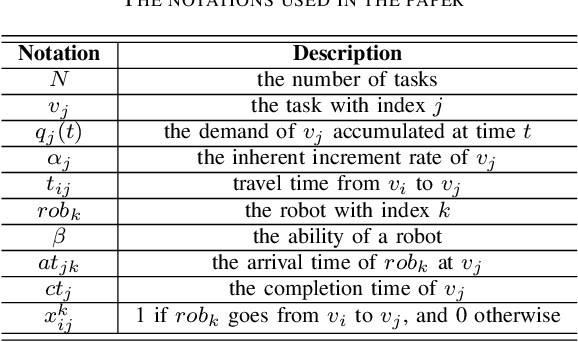
Abstract:An emerging optimisation problem from the real-world applications, named the multi-point dynamic aggregation (MPDA) problem, has become one of the active research topics of the multi-robot system. This paper focuses on a multi-objective MPDA problem which is to design an execution plan of the robots to minimise the number of robots and the maximal completion time of all the tasks. The strongly-coupled relationships among robots and tasks, the redundancy of the MPDA encoding, and the variable-size decision space of the MO-MPDA problem posed extra challenges for addressing the problem effectively. To address the above issues, we develop a hybrid decomposition-based multi-objective evolutionary algorithm (HDMOEA) using $ \varepsilon $-constraint method. It selects the maximal completion time of all tasks as the main objective, and converted the other objective into constraints. HDMOEA decomposes a MO-MPDA problem into a series of scalar constrained optimization subproblems by assigning each subproblem with an upper bound robot number. All the subproblems are optimized simultaneously with the transferring knowledge from other subproblems. Besides, we develop a hybrid population initialisation mechanism to enhance the quality of initial solutions, and a reproduction mechanism to transmit effective information and tackle the encoding redundancy. Experimental results show that the proposed HDMOEA method significantly outperforms the state-of-the-art methods in terms of several most-used metrics.
Machine vision detection to daily facial fatigue with a nonlocal 3D attention network
Apr 21, 2021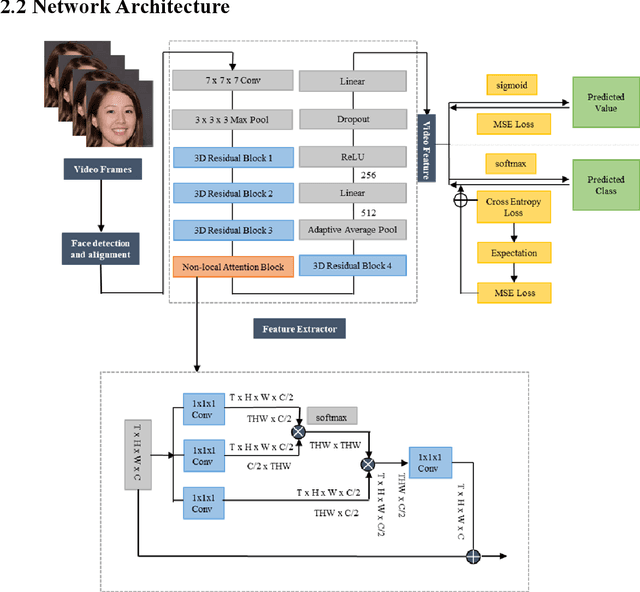

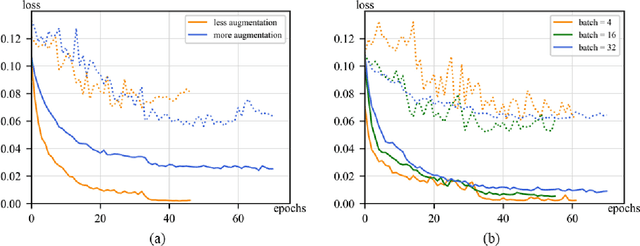
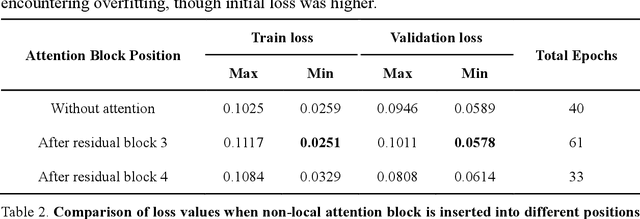
Abstract:Fatigue detection is valued for people to keep mental health and prevent safety accidents. However, detecting facial fatigue, especially mild fatigue in the real world via machine vision is still a challenging issue due to lack of non-lab dataset and well-defined algorithms. In order to improve the detection capability on facial fatigue that can be used widely in daily life, this paper provided an audiovisual dataset named DLFD (daily-life fatigue dataset) which reflected people's facial fatigue state in the wild. A framework using 3D-ResNet along with non-local attention mechanism was training for extraction of local and long-range features in spatial and temporal dimensions. Then, a compacted loss function combining mean squared error and cross-entropy was designed to predict both continuous and categorical fatigue degrees. Our proposed framework has reached an average accuracy of 90.8% on validation set and 72.5% on test set for binary classification, standing a good position compared to other state-of-the-art methods. The analysis of feature map visualization revealed that our framework captured facial dynamics and attempted to build a connection with fatigue state. Our experimental results in multiple metrics proved that our framework captured some typical, micro and dynamic facial features along spatiotemporal dimensions, contributing to the mild fatigue detection in the wild.
 Add to Chrome
Add to Chrome Add to Firefox
Add to Firefox Add to Edge
Add to Edge